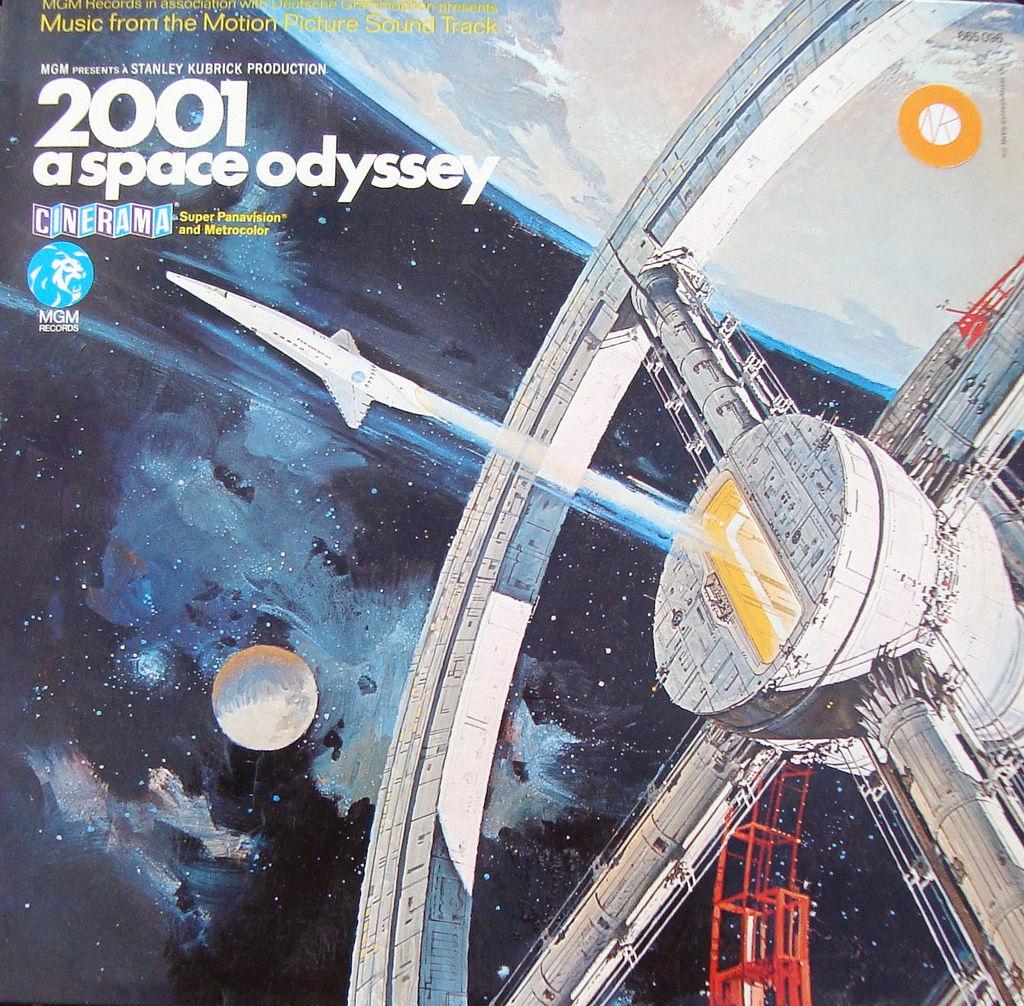Stanley Kubrick’s “2001: A Space Odyssey” was originally released in 1968. And although the film hasn’t been new in 50 years, Bryan Premiere Cinema dedicated all of last week to showing the mind-bending classic on their IMAX screen. This discussion is in honor of the 50th anniversary of the film that changed the science fiction genre forever.
Seeing the movie for the first time on an IMAX screen, what impressed me the most were the visual effects. 2001 was made before the advent of CGI, so everything that appears on screen was done with some form of practical effect. For a film that takes place almost entirely in space and low gravity environments, this is extraordinarily impressive. Most of the levitating objects were famously captured with careful use of string, but several shots, including the iconic scene where a spaceflight stewardess uses velcro shoes to walk up a wall, were done with elaborate camera techniques. I was quite frankly blown away by some of the seemingly impossible spaceship interiors Kubrick designed, so I can only imagine how people felt watching the film back in 1968.
Another thing I found to be incredible was HAL, the spaceship’s onboard artificial intelligence (AI) computer. Back in ’68, AI had been invented, but was still in its early stages. For Kubrick to include a talking, thinking computer with a personality and fears must have been revolutionary. It’s likely that HAL’s sinister and flawed depiction within the film reflected the popular view at the time that technology can be dangerous. HAL’s betrayal of the crew he was designed to protect mirrored the public fear that increasingly bold technological innovations could have unforeseen negative consequences for humanity.
Plot-wise, 2001 is just about as bizarre as they come. Based on a book of the same name, published earlier in the same year, the surreal storyline did not come from Kubrick himself, but from the book’s author, Arthur C. Clarke. The plot isn’t exactly linear, and it doesn’t exactly explain, well, anything. The entire film is left very open to interpretation. The only part of the movie that I would consider traditional storytelling is the hour or so near the middle of the film, during the expedition to Saturn. The rest of the film seems to focus more on world-building and the development of suspense than actually explaining to viewers what’s happening on-screen. The end result is an incredibly strange, incredibly unclear narrative that nonetheless left me feeling as though I had just witnessed something very profound. The ending of the film raised far more questions than it answered, but somehow still felt like a fitting conclusion.
Kubrick brought his own unique sense of pacing and suspense to the film. Much of the movie seemed to move extremely slowly, and that lackadaisical pace is one of the most popular criticisms of the film. I didn’t mind the snail’s pace at which the two-hour 19-minute movie progressed, because I felt that it added to the mysterious, ambiguous and oddly tense tone of the film. By the time the final credits rolled, I was absolutely exhausted. Kubrick manages to use screeching music, magnificent space vistas and the notoriously slow pace to build up and maintain an incredible level of suspense and tension. The only respite was the intermission, which Bryan Premiere included in the showing as a matter of tradition (and which I made use of to go buy a hot dog).
“2001” is an almost indescribable experience. I am honored to have been able to see this masterpiece on an IMAX screen. It’s one of those films that you just have to see at some point in your life. I still can only speculate about what it means, but it’s a fascinating exercise in filmmaking techniques if nothing else. Bryan Premiere’s anniversary event has ended, but do yourself a favor and buy or rent a copy to watch at home. It’s a weird movie, but certainly one you’ll remember.
“2001: A Space Odyssey” 50th anniversary discussion
September 3, 2018
Photo by Creative Commons
“2001: A Space Odyssey” was originally released April 3, 1968 and is now celebrating 50 years.
0
Donate to The Battalion
$1865
$5000
Contributed
Our Goal
Your donation will support the student journalists of Texas A&M University - College Station. Your contribution will allow us to purchase equipment and cover our annual website hosting costs, in addition to paying freelance staffers for their work, travel costs for coverage and more!










